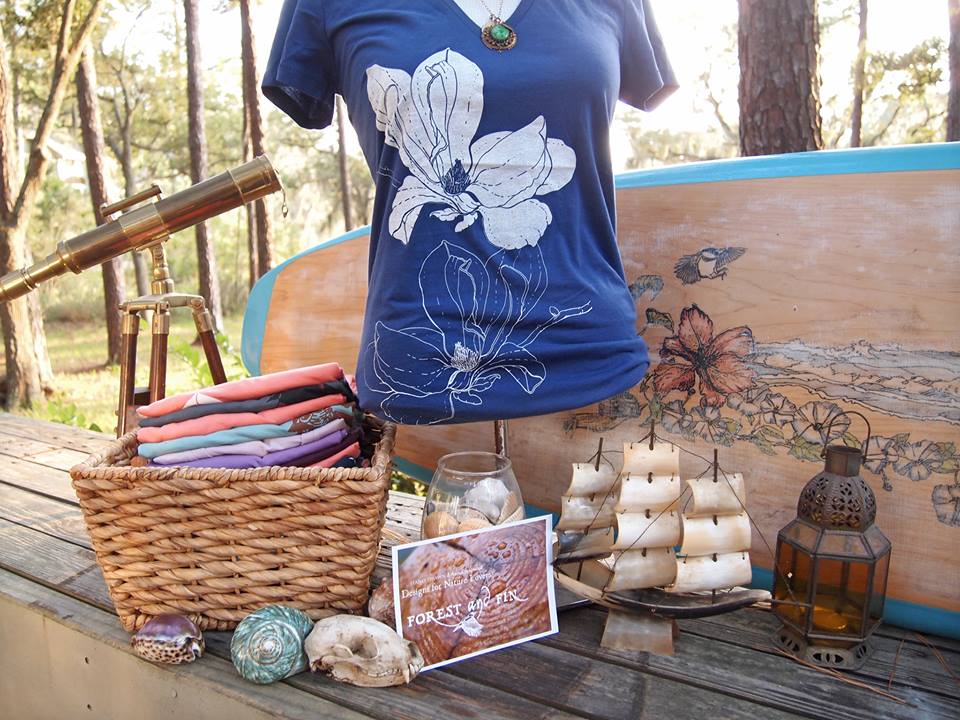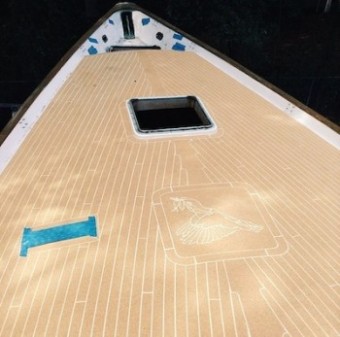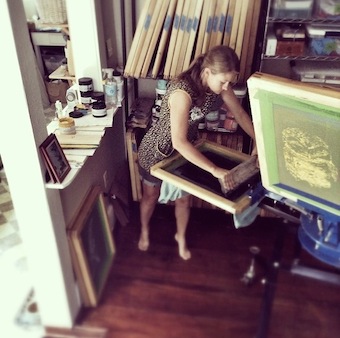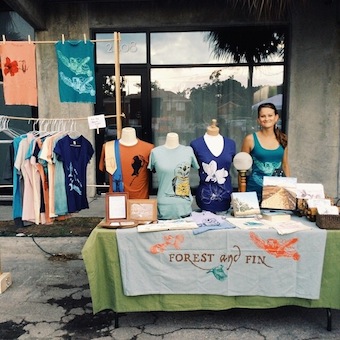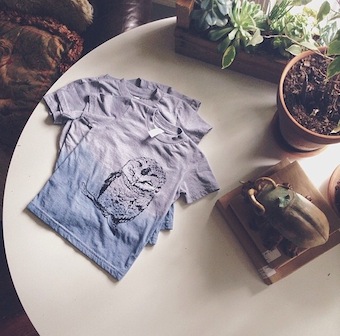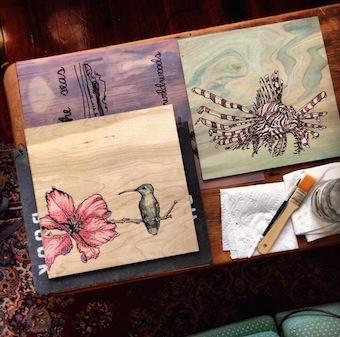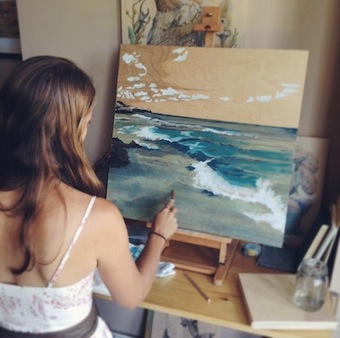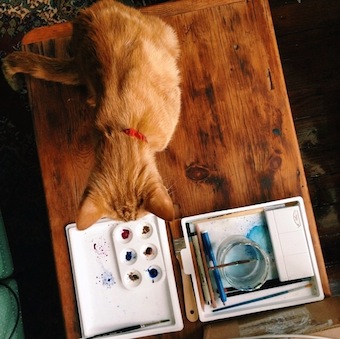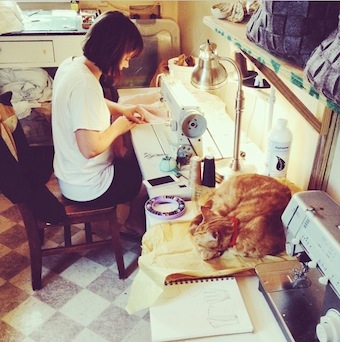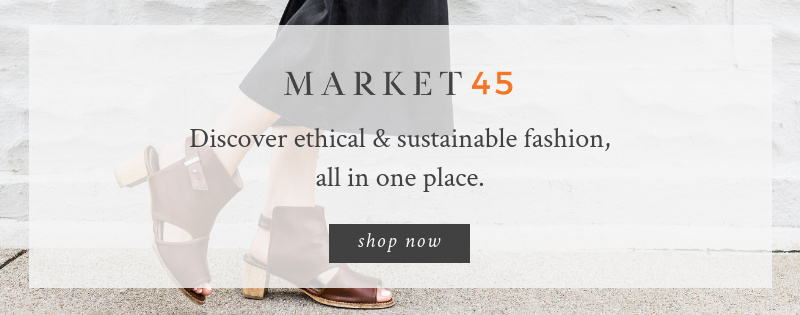Lara Neece is the artist and founder behind Forest and Fin, a line of apparel that is hand-drawn and screen-printed by Lara herself. She uses eco-friendly, water-based inks, sustainable packaging and natural materials, using the environment as a consistent source of inspiration.
Through Factory45, we’re working to grow her Etsy sales, launch her own e-commerce site, and debut a biking-friendly wrap skirt that is currently in sample development.
Because the quality of her work can’t efficiently be explained in words, I want to introduce her to the Factory45 community through her photos. Enjoy.
Lara and her husband were recently married on the island of Tortola. They live in Savannah, GA where they’re refurbishing a sailboat. Lara carved one of her designs into the deck of the boat.
Lara screenprints her hand-drawn designs onto t-shirts in her studio. She is also an active part of the maker movement in Savannah’s cooperatives and artisan scene.
Lara is an artist and creative to the core, and she experiments with mixed media when she isn’t working on her apparel company. Keep an eye out for her sustainably-made wrap skirt coming soon… In the meantime, you can show Lara some love on Facebook and Instagram.

